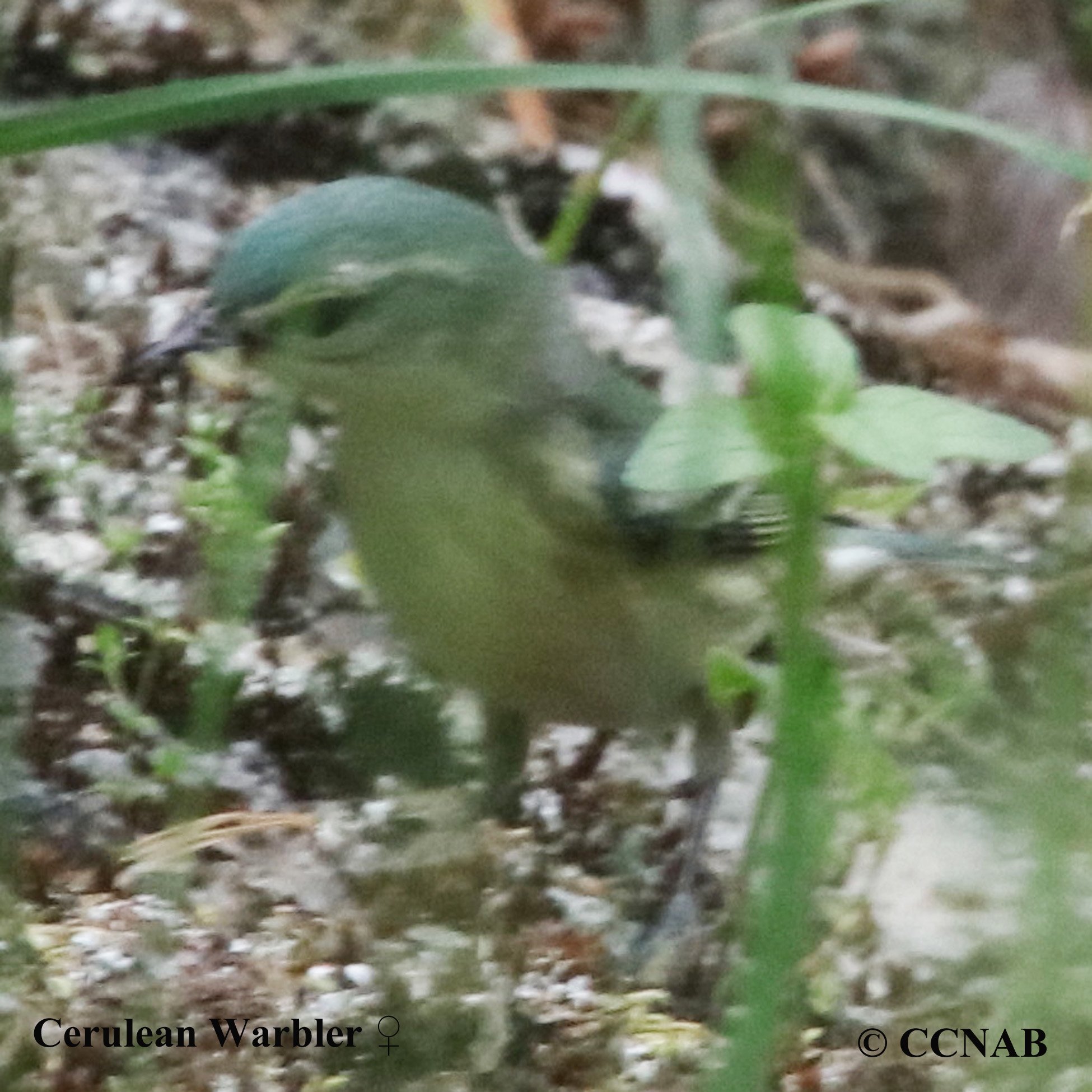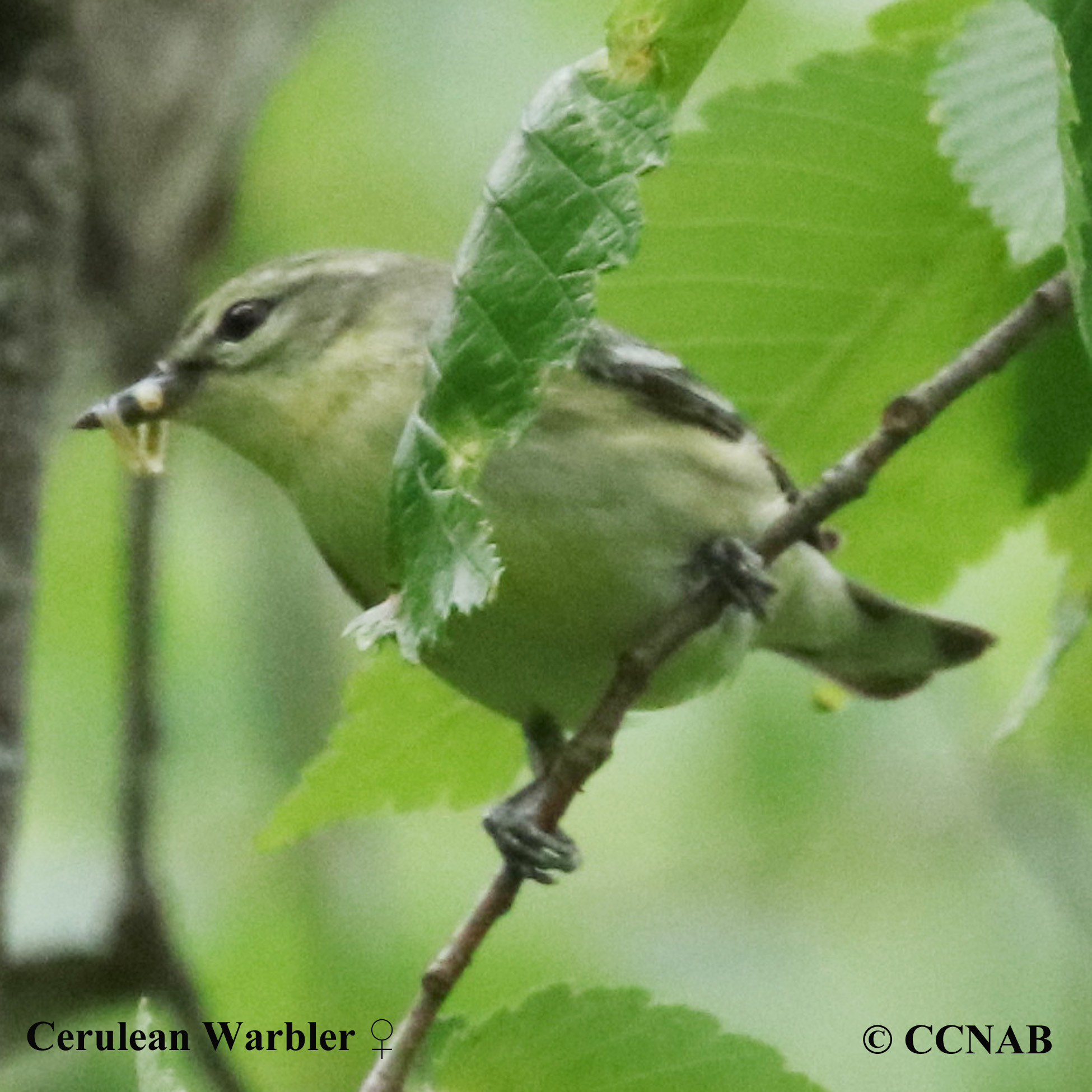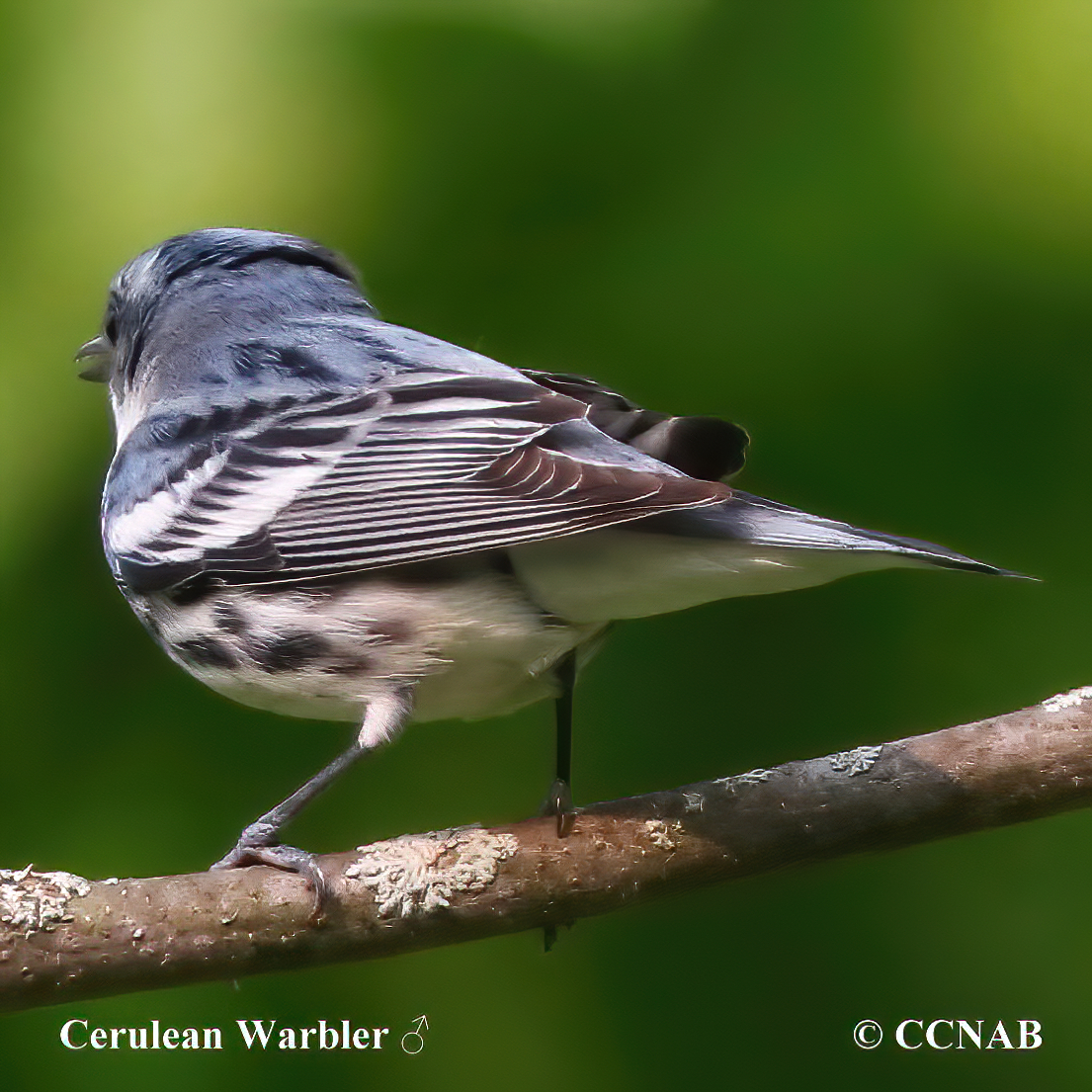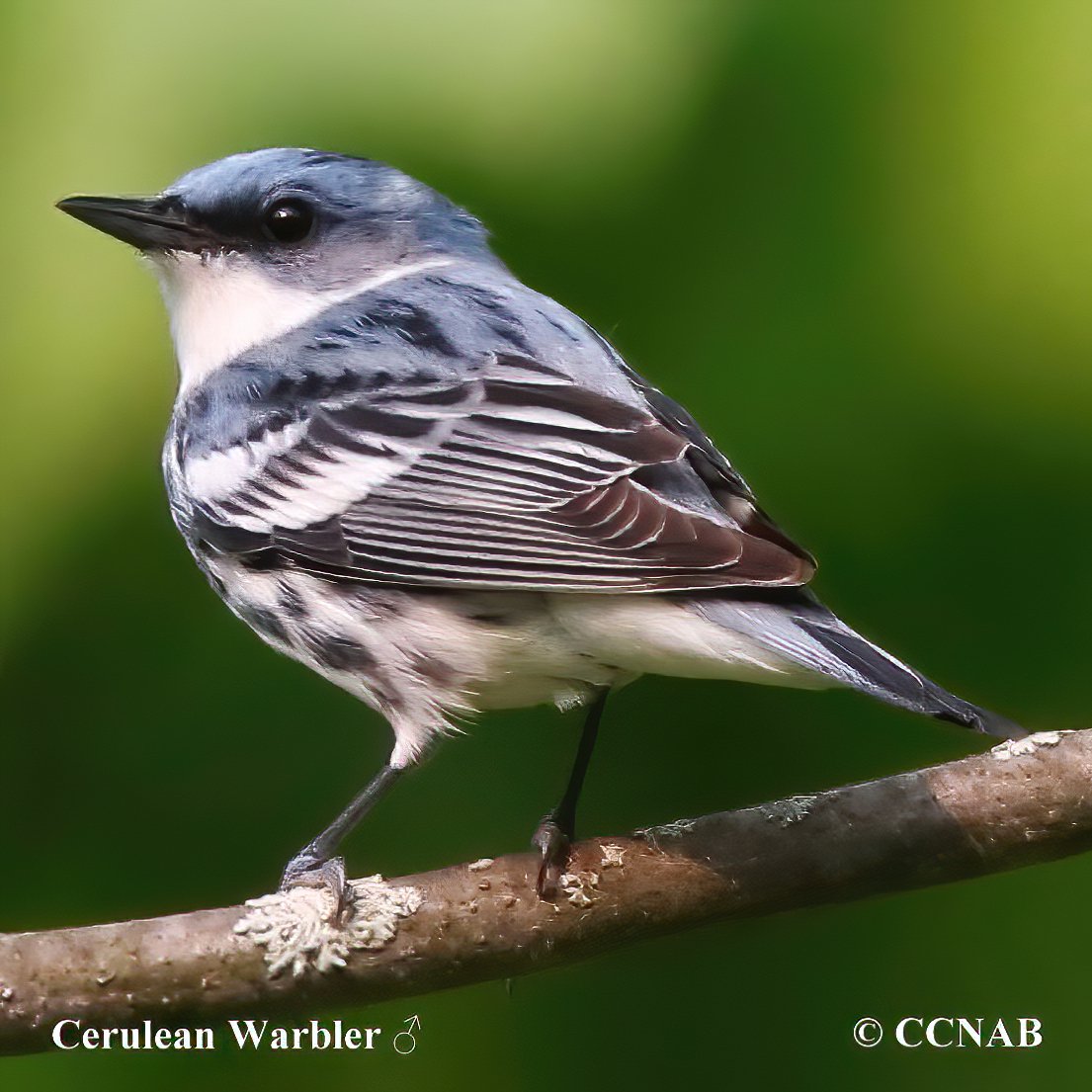North American Bird Search Box
This search box can be used to find bird species using bird's english, french or latin name, or to identify bird by its 4 letter Alpha Code
Field Guide for all the Birds of North America
Cerulean Warbler
4 Letter (english names) Alpha Code: CERW (2)
Paruline azuré
Setophaga cerulea
Information, images and range maps on over 1,000 birds of North America, including sub-species, vagrants, introduced birds and possibilities
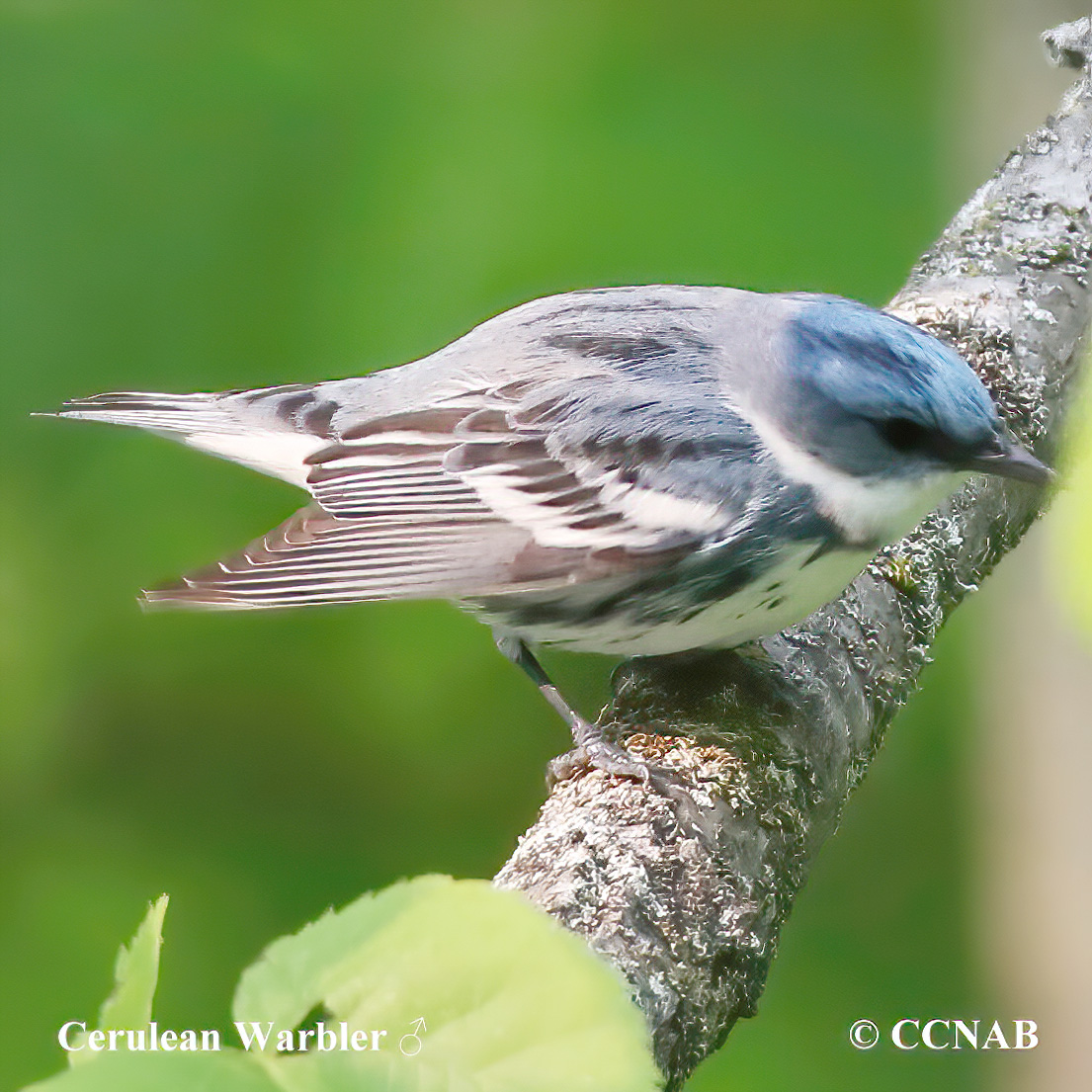
Species: The Cerulean Warbler (Dendroica castanea) is found in mature open deciduous forest. It is an extremely hard bird to observe, because of its small size and habit of nesting or feeding high up in the crowns of the mature trees. In recent years, because of deforestation, this beautiful warbler is in declining numbers, but on a positive note, it is expanding into northeastern North America. This may be a chance to increase its numbers with a larger breeding range. Because of the plain green appearance of the juvenile, there is a possibility of confusing it with the Tennessee Warbler.
Distinctions: The colour of the male is described as sky blue. Blue head, back, wings and tail. White throat, breast and undertail coverts, black streaking on its flanks, black streaking forming a band around the throat. Both sexes have prominent white wingbars, dark lores. The female has light-coloured streaking on the throat and flanks, greenish-yellow face and throat, with dark lores. White or creamy lower breast and undertail coverts. Bluish-green crown, wings and back, juvenile has greenish cheeks, crown, nape and back, dark wings with two white wingbars, greenish-white breast and supercilium.
Voice: Chipping call, buzzy notes, songs sound like "zray-zray-zray-zreeeee", repeated often.
Nesting: Three to five creamy or greenish-white coloured eggs with brown markings. Builds its nest high up in mature deciduous tree, away from the center. The nest is composed of leaves, twigs, moss and lined with fine grasses and hair.
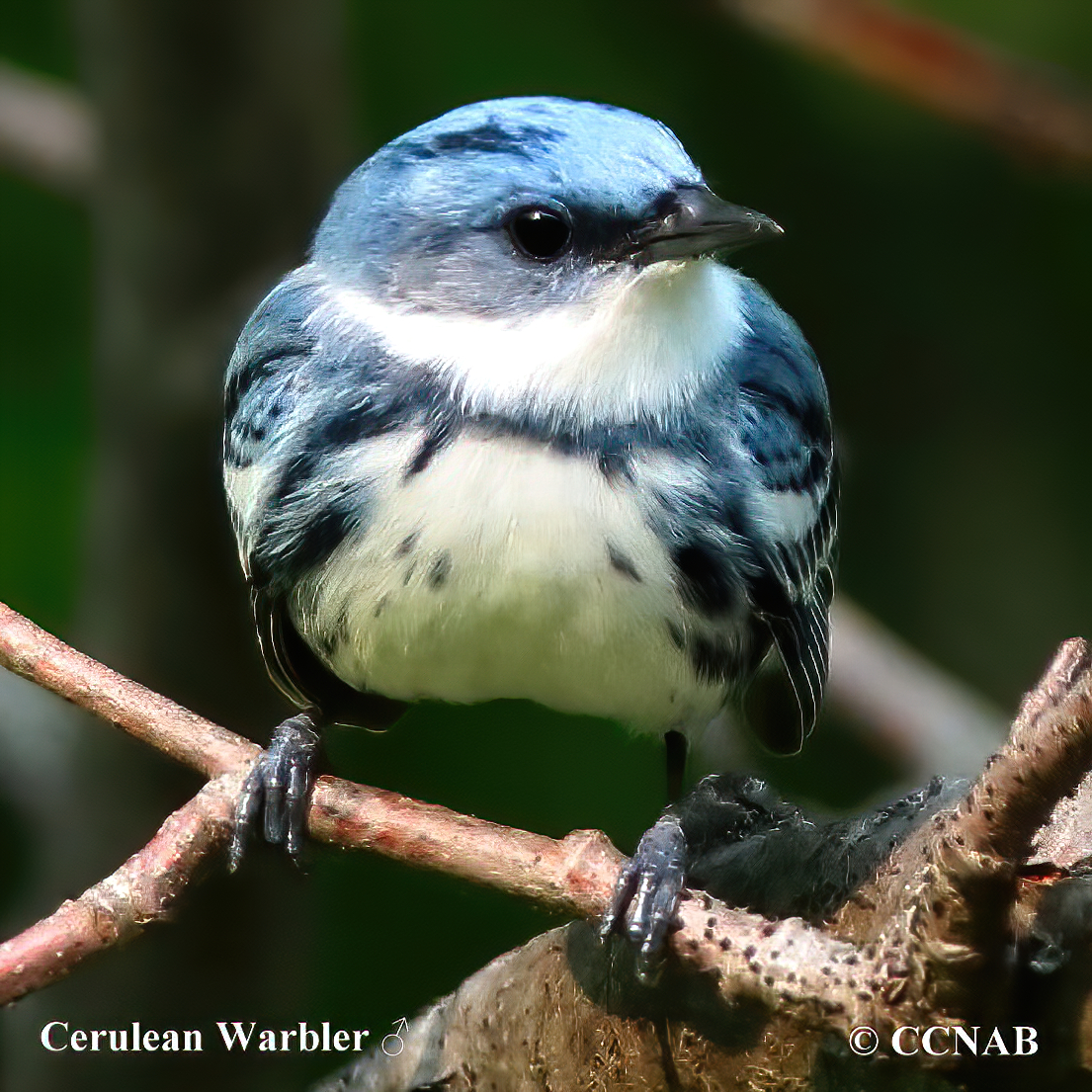
Life, Habitat & Pictures of North American Warblers
| B L | W W | W | Family | Latin Name |
|---|---|---|---|---|
| 4.75" 12cm | 7.75" 19.7cm | 0.35oz 9.9g | Parulidae | Setophaga cerulea |
North American Birds Videos
- Click here - Male
- Click here - Male
North American Bird Calls
- Click here
- Summer
- Year Around
- Winter
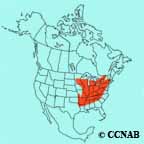
Distribution: Found from southern boundaries of Quebec, into southern Ontario, south of the Great Lakes, west to Minnesota. Touching the western borders of Arkansas, to western South Carolina, northwest to Massachusetts. It is expanding into northeastern North America. It spends its winters in South America.
References to Other Bird Sites:
ABA - American Birding Association This site represents an organization that maintains official records of all birds species that have been proven to have been seen inside the perimeters of the North American Continent and the surrounding bodies of water. Regular revised versions are posted to keep the bird list current at all times. This is the list used by all serious birders over their lifetime. You may be aware of the movie called the "Big Year". It was with this list that all the competing birders used in an attempt to set a new record as to how many bird species that could be seen by an individual birder in one calendar year.
